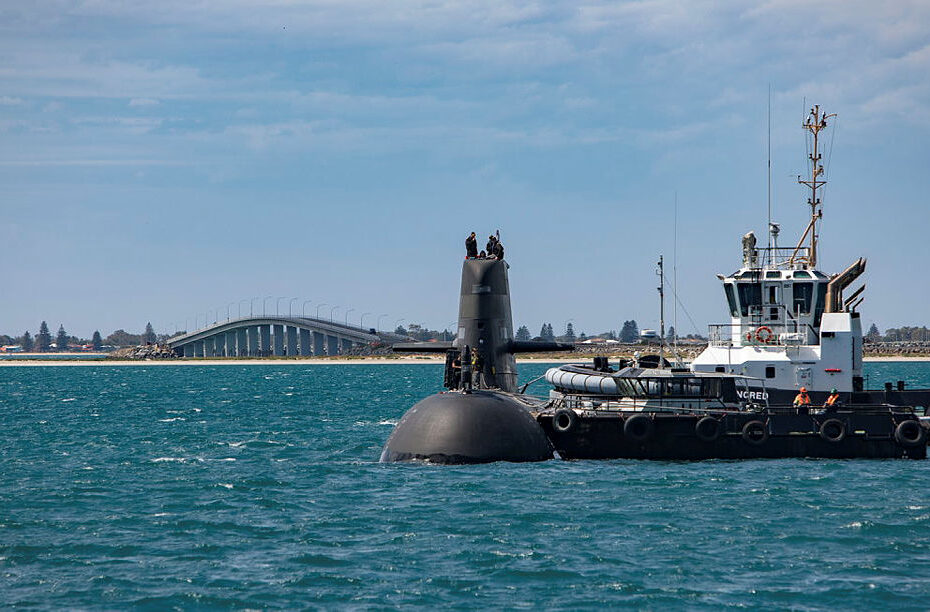Australian Submarine HMAS Collins returning to Fleet Base West on HMAS Stirling after several years away conducting her full cycle docking and East coast tasking. (Photo by Australian Department of Defence)
Submarines, the silent sentinels of the seas, require meticulous maintenance and periodic overhauls to ensure peak performance and operational readiness. Among the various maintenance procedures, full cycle docking (FCD) stands out as a comprehensive process that plays a crucial role in sustaining the longevity and effectiveness of these underwater vessels.
Full cycle docking involves taking a submarine out of the water and placing it in a dry dock for extensive maintenance, repairs, and upgrades. This intricate process encompasses a range of activities, from hull inspections to overhauling propulsion systems, and often lasts for several months to even years, depending on the scope of work required.
At the heart of full cycle docking is the need to address both routine maintenance tasks and more complex engineering challenges. One of the primary objectives is to ensure the structural integrity of the submarine’s hull. This involves thorough inspections for any signs of corrosion, damage, or fatigue that could compromise the vessel’s safety and performance.
Additionally, propulsion systems undergo comprehensive overhauls during full cycle docking. This includes servicing of the submarine’s nuclear reactor (if applicable), refurbishment of propulsion motors, replacement of worn-out components, and testing of critical systems to ensure optimal functionality.
Electronics and communication systems also receive attention during FCD. Advances in technology necessitate regular upgrades to sensors, navigation equipment, and communication systems to keep submarines aligned with modern warfare requirements and evolving threats.
Moreover, full cycle docking presents an opportune moment to implement performance enhancements and technological innovations. This could involve installing new weapon systems, integrating stealth technologies, or upgrading onboard software to enhance the submarine’s capabilities and maintain its competitive edge in the underwater domain.
The logistics involved in full cycle docking are intricate and demanding. Dry docks equipped with specialized facilities and skilled personnel are essential for executing the maintenance tasks efficiently. Coordination among various stakeholders, including naval engineers, technicians, and support staff, is paramount to ensure that the submarine is restored to operational status within the designated timeframe.
Furthermore, full cycle docking is not merely about maintaining individual submarines; it also contributes to building and sustaining a robust submarine fleet. By adhering to scheduled maintenance cycles and incorporating lessons learned from previous overhauls, navies can optimize the availability and reliability of their submarine assets, thereby enhancing overall fleet readiness and effectiveness.
From a strategic perspective, full cycle docking plays a vital role in sustaining naval deterrence capabilities. Submarines form an integral part of a nation’s defense posture, providing stealthy and versatile platforms for various missions, including intelligence gathering, surveillance, and strategic deterrence. Regular maintenance ensures that these submarines remain operationally ready to fulfill their critical roles, thereby deterring potential adversaries and safeguarding national interests.
In conclusion, full cycle docking is a cornerstone of submarine maintenance and modernization efforts, ensuring the long-term viability and effectiveness of these formidable underwater platforms. By investing in comprehensive overhauls and incorporating technological advancements, navies can prolong the service life of their submarines and maintain their competitive edge in an increasingly contested maritime environment. As threats evolve and geopolitical dynamics shift, the significance of full cycle docking in sustaining naval capabilities and safeguarding maritime security remains undeniable.




